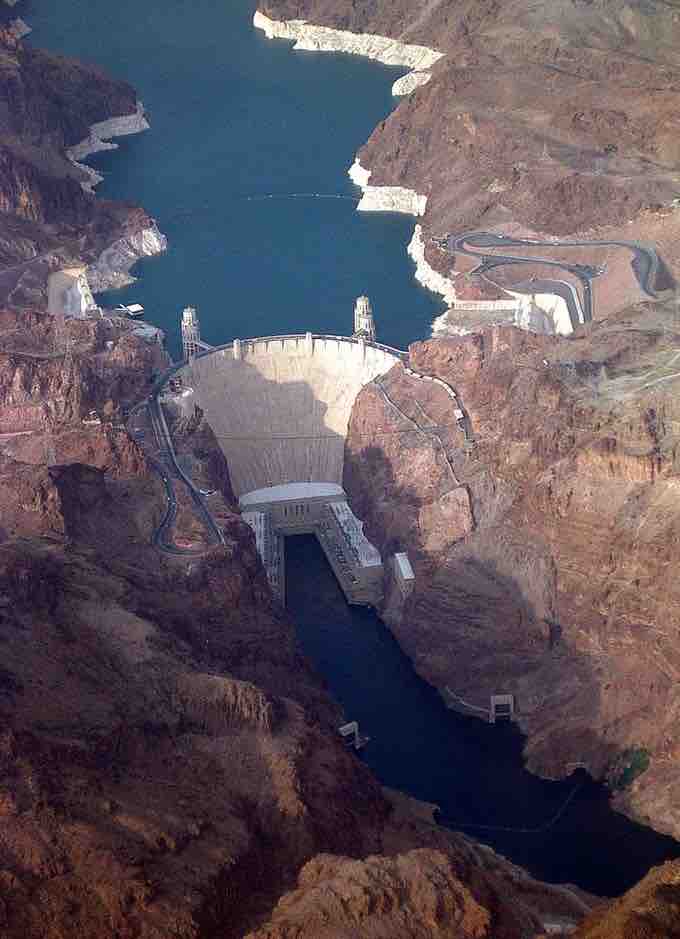Gravitational energy is the potential energy associated with gravitational force (a conservative force), as work is required to elevate objects against Earth's gravity. The potential energy due to elevated positions is called gravitational potential energy, evidenced, for example, by water held in an elevated reservoir or behind a dam (as an example, shows Hoover Dam). If an object falls from one point to another point inside a gravitational field, the force of gravity will do positive work on the object, and the gravitational potential energy will decrease by the same amount.

Hoover Dam
Hoover dam uses the stored gravitational potential energy to generate electricity.
Potential Near Earth
Gravitational potential energy near the Earth can be expressed with respect to the height from the surface of the Earth. (The surface will be the zero point of the potential energy. ) We can express the potential energy (gravitational potential energy) as:
where PE = potential energy measured in joules (J), m = mass of the object (measured in kg), and h = perpendicular height from the reference point (measured in m); g = gravitational acceleration (9.8m/s2). Near the surface of the Earth, g can be considered constant.
General Formula
However, over large variations in distance, the approximation that g is constant is no longer valid. Instead, we must use calculus and the general mathematical definition of work to determine gravitational potential energy. For the computation of the potential energy we can integrate the gravitational force, whose magnitude is given by Newton's law of gravitation (with respect to the distance r between the two bodies). Using that definition, the gravitational potential energy of a system of masses m and M at a distance r using gravitational constant G is:
where K is the constant of integration. Choosing the convention that K=0 makes calculations simpler, albeit at the cost of making U negative. For this choice, the potential at infinity is defined as 0.